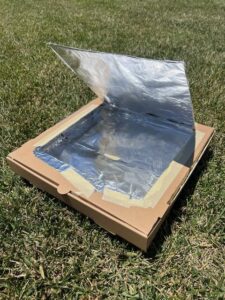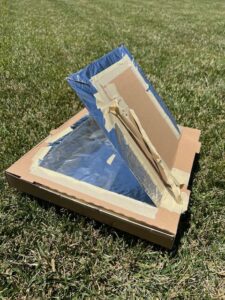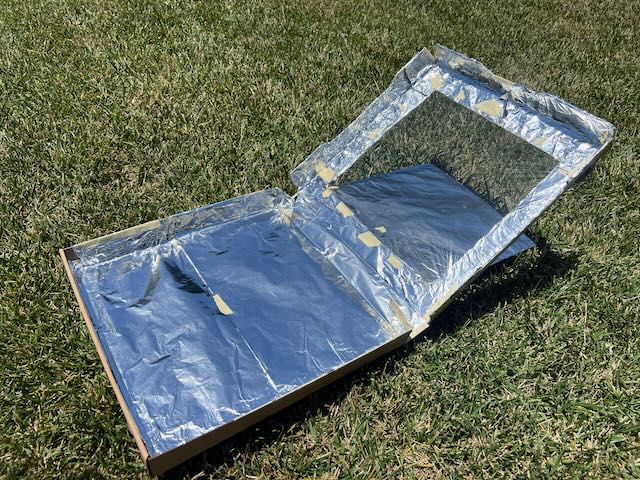Solar Oven Build and Test
Imagine a place far away, where families struggle to cook their food. They don’t have electricity for stoves, and there are no trees to chop for firewood. Every day is a challenge to prepare a warm meal. What if you could help them?
Think about how your solar oven design could be shared with communities around the world who don’t have access to reliable cooking methods. Could your innovation inspire a non-profit organization dedicated to providing sustainable cooking solutions? What would be the first steps to making that happen?
Today, you’ll become an engineer, designing and building a special oven that uses only the sun’s power! This solar oven could change lives by providing a sustainable and safe way to cook.
Materials You’ll Need:
- Pre-cut pizza boxes
- Aluminum foil
- Black construction paper
- Plastic wrap
- Ruler
- Pencil
- Masking Tape
- S’mores ingredients (marshmallows, graham crackers, chocolate) or nachos (tortilla chips, shredded cheese)
- Nachos ingredients (chips, cheese, extras)
Your Challenge: Build a Solar Oven!
- Assemble Your Oven: You’ll start with pre-cut pizza boxes. Follow the instructions to fold and tape them into the basic oven shape. Think about how the sun will enter and be trapped inside.
- Reflect and Absorb:
- The Reflector: Cover the inner flaps of your pizza box with aluminum foil. This will reflect sunlight into your oven. How can you angle these reflectors to catch the most sun?
- The Absorber: Decide: will you use a piece of aluminum foil or black construction paper at the bottom of your oven? Which do you think will absorb more heat from the sun? This is your first experiment!
- Trap the Heat: Cover the opening of your oven with plastic wrap. This acts like a window, letting sunlight in but keeping the heat trapped inside.
- Test and Observe:
- Place your s’mores or nachos inside your solar oven.
- Take your oven outside to a sunny spot.
- Become a Scientist: How will you measure if your oven is working? How long does it take for your food to cook? What happens if you change the angle of your oven to the sun?
- Innovate and Improve:
- After your first test, discuss with your group: How could you make your solar oven even more efficient? What design changes would you try next? Could you add more layers? Use different materials?
- Imagine presenting your improved solar oven to those families who need it most. How would you explain its benefits?
Beyond the Workshop: A Global Impact
Same questions, but now that you’ve built and tested your ovens how have your responses changed?
Think about how your solar oven design could be shared with communities around the world who don’t have access to reliable cooking methods. Could your innovation inspire a non-profit organization dedicated to providing sustainable cooking solutions? What would be the first steps to making that happen?
Watch the video below to learn the science behind solar ovens.
Pizza Oven Example:




